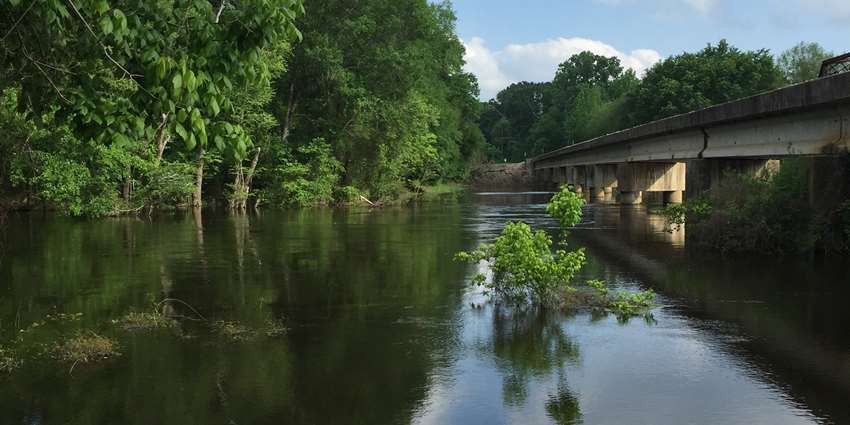The Texas Water Resources Institute’s (TWRI) Texas Riparian and Stream Ecosystem Education Program will host a workshop from 8 a.m.-4 p.m. March 3 in Lampasas for area residents interested in land and water stewardship in the Lampasas River watershed.
The morning session will be at the Texas Farm Bureau, 1793 N. U.S. Highway 281. The afternoon session will include a walk and presentations along the river.
The free workshop is co-hosted by Texas A&M AgriLife Research at Blackland Research Center, the Texas A&M AgriLife Extension Service office in Lampasas County and the Lampasas Watershed Partnership.
The partnership consists of area residents and other stakeholders from across the watershed.
“We are able to offer this workshop without cost thanks to program funding provided through a Clean Water Act nonpoint source grant from the Texas State Soil and Water Conservation Board and U.S. Environmental Protection Agency,” said Nikki Dictson, TWRI Extension program specialist and coordinator.
Dictson said the workshop will focus on the nature and function of stream and riparian zones, as well as the benefits and economic impacts from proper functioning riparian systems.
A riparian zone is the land area adjacent to the bank of a stream, creek, bayou or river.
Dictson said workshop topics will include riparian and watershed management principles, water quality, riparian vegetation, hindrances to healthy riparian areas, stream processes, management practices and discussion of local resources.
“The goal of the workshop is for participants to better understand riparian and watershed processes, the benefits of healthy riparian areas and what resources are available to prevent degradation while improving water quality,” she said.
Presentations will be given by representatives from TWRI, USDA’s Natural Resources Conservation Service, AgriLife Extension, Texas Parks and Wildlife Department, Texas A&M Forest Service and AgriLife Research.
Attendees must RSVP by Feb. 26 to Dictson at 979.458.5915 or n-dictson@tamu.edu, or online at texasriparian.org/trainings.
The program will include a lunchtime presentation. A catered box lunch is available for $10, or attendees may bring their own lunch. Attendees wanting lunch should download the credit card authorization form found on the website and send by email to ndictson@tamu.edu or by mail to Dictson, 1500 Research Parkway, Suite 110, College Station, TX 77843-2260. They may also mail a check or pay in cash at the event.
Lisa Prcin, AgriLife Research and Lampasas River Watershed coordinator, said the Lampasas River above Stillhouse Hollow Lake was identified for watershed protection plan development due to concerns about elevated levels of bacteria, as reported in the Texas Commission on Environmental Quality’s 2002 Texas Water Quality Inventory. Both Sulphur Creek and North Fork Rocky Creek have also been identified as having a dissolved oxygen concern.
“The surrounding land mainly supports rural and agricultural uses, but rapid urbanization is occurring in portions of the watershed, causing increased concerns to protect the river,” Prcin said.
The Lampasas River watershed includes parts of Mills, Hamilton, Lampasas, Coryell, Burnet, Bell and Williamson counties.
“The partnership identified degradation to riparian areas as a concern, which prompted the need for educational programs like this riparian workshop,” Prcin said.
Heath Lusty, AgriLife Extension agent for Lampasas County, said participants will receive a certificate of completion and appropriate continuing education unit certificates at the conclusion of the training.
The workshop offers several types of continuing education units, including three units — two general and one integrated pest management — for Texas Department of Agriculture pesticide license holders. It offers one unit from TWRI, six hours from the Texas Forestry Association, four hours from the Society of American Foresters and six hours for Texas Nutrient Management Planning specialists. The program may also be used for continuing education units for professional engineers.
For more information, contact Dictson, visit texasriparian.org or follow the program on Facebook at facebook.com/TexasRiparianAssociation.



